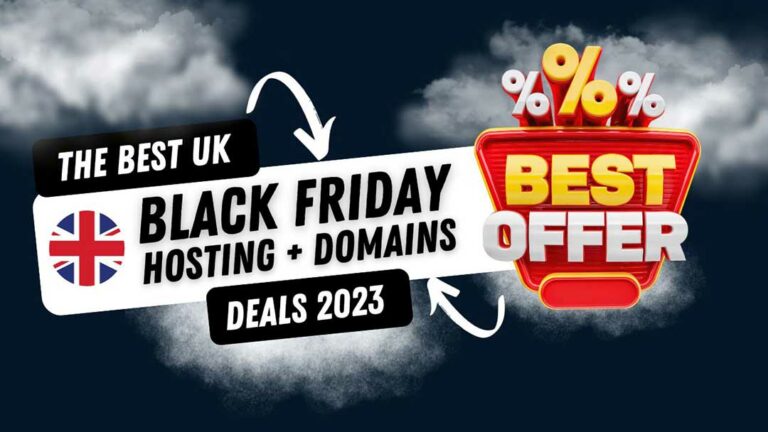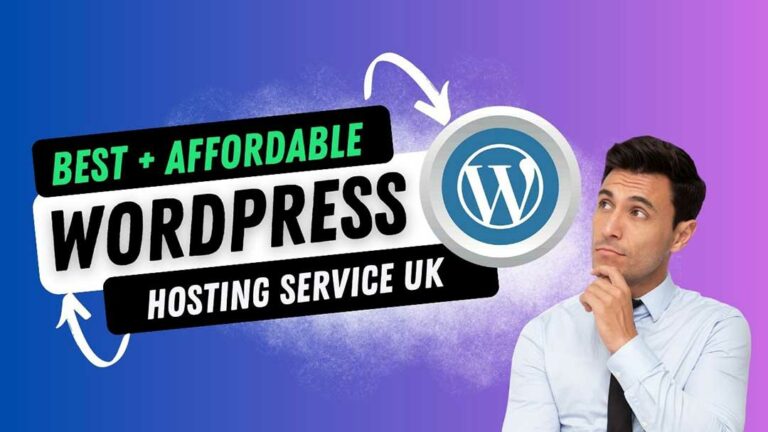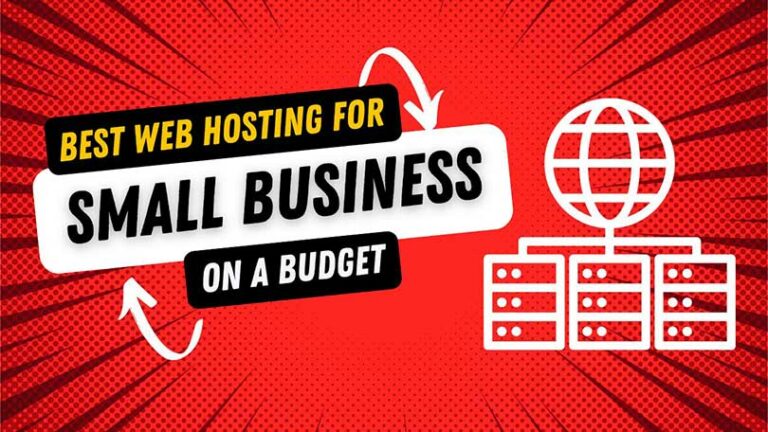Website Design Cost UK: Navigating Website Design Costs in the UK: What to Expect Financially
In the evolving landscape of digital presence, understanding the financial aspects of website design in the UK is crucial for businesses and individuals alike.
The cost of creating a website can vary significantly based on numerous factors, including design complexity, functionality, and the expertise of the designer or agency involved.
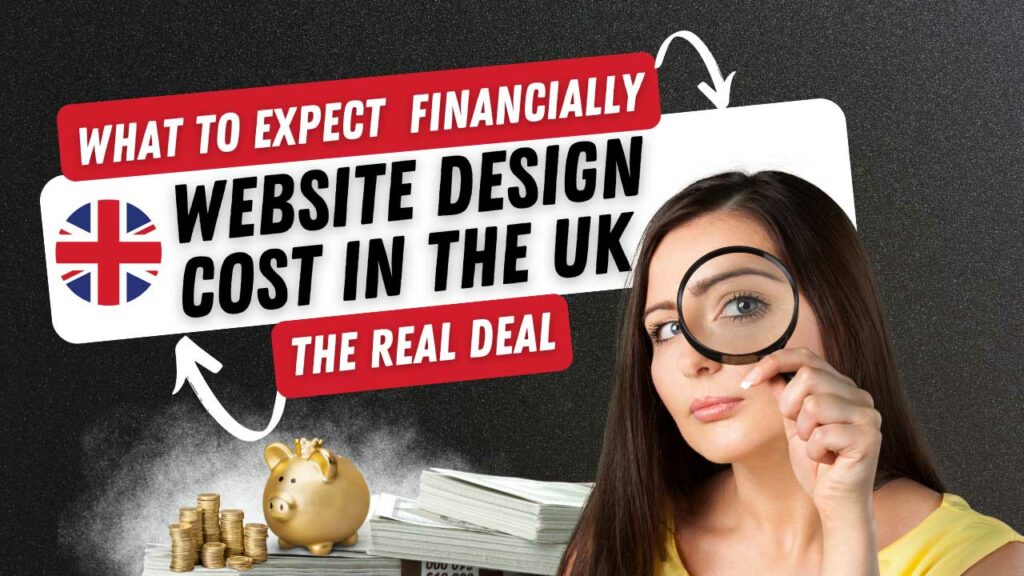
This article delves into the intricacies of website design costs, offering insights into what you can expect to invest and how to make informed decisions that align with your budget and objectives.
Key Takeaways for Website Design Cost UK
The Real Deal on Website Design Costs
The “real deal” on website design costs is that there isn’t a one-size-fits-all answer. Several factors determine the amount you ultimately pay. However, understanding these factors can help you plan appropriately. Let’s break it down:
Understanding the Basics
When you’re starting out as a sole trader or running a small business, getting your website right is crucial. Your website is often the first point of contact with potential clients, so it’s important to understand the financials involved in creating a site that reflects your brand and meets your needs.
Here’s a quick rundown of what you might expect to pay for a basic web design in the UK:
Website Design Cost UK: Type | Cost |
|
|
Free to | Low cost, no technical skills needed | Limited customisation, may not be as professional | |
Freelancer | £300 to £3000 | More personalised service, unique design | Quality and price can vary widely |
Small Agency | £500 to £5,000 | Professional service, team expertise, | Ongoing Costs within a Binding Contract |
Remember, these are just starting points. The final cost can increase based on the complexity of your site, the features you need, and the level of design sophistication you’re after.
Focused on Empowerment
Build a stunning website yourself! Hostinger’s AI builder makes DIY design easy – no coding skills needed. Offer Only 🏷️ £2.59/mo + 3 Months FREE + 30 Day Money-back Guarantee! Find out more
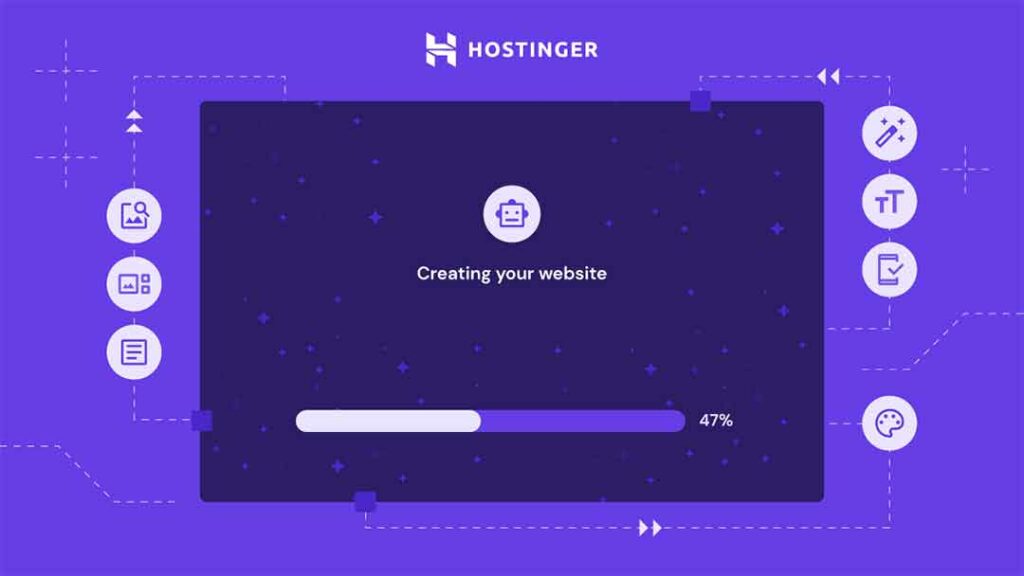
It’s not just about having a website; it’s about having the right website that can grow with your business and continue to serve your customers effectively.
So, take the time to consider what you really need from your website and plan your budget accordingly. It’s an investment in your online presence that can pay dividends in the long run.
Factors Influencing the Price Tag
When you’re diving into the world of web design, it’s crucial to understand that several factors will dictate the final bill. The complexity of your website is the main driver of cost; a simple brochure site for a sole trader will be far less expensive than a feature-rich e-commerce platform for a small business. Here’s a quick rundown of what can affect your outlay:
- The number of pages and the level of customisation required.
- Whether you need an online store with e-commerce capabilities.
- The quality and uniqueness of design elements.
- Integration with external services, like social media or email marketing.
- SEO and mobile responsiveness, which are no longer optional.
Remember, investing in a good website isn’t just an expense; it’s an investment in your business’s future. Cutting corners might save you a bit now, but it could cost you dearly in lost opportunities.
Don’t forget to factor in ongoing costs as well. Maintenance, hosting, domain renewal, and future updates all add to the total cost of ownership. It’s not just about the initial setup; it’s about ensuring your web presence remains strong and effective over time.
Budgeting for Your Web Presence
When it comes to website design cost in the UK, it’s crucial to plan your finances with care, especially if you’re a sole trader, small business, or freelancer.
Budgeting isn’t just about the initial outlay; it’s about the full journey of your web presence. Consider not only the design and development costs but also the ongoing expenses such as hosting, maintenance, and updates.
- Initial Design & Development: This is your starting point, where you’ll decide on the complexity and features of your site.
- Maintenance & Updates: Regular tweaks and content updates keep your site fresh and functional.
- Hosting & Domain Fees: These are the annual or monthly costs to keep your site accessible online.
Remember, a well-planned budget can prevent financial strain down the line. It’s not just about affording the design; it’s about sustaining your site long-term.
Lastly, don’t forget to set aside a portion of your budget for unforeseen expenses. The digital landscape is ever-changing, and your website may need to adapt to new trends or technologies that could incur additional costs.
Design Elements That Affect Your Wallet
Graphics and Visual Flair
When it comes to sprucing up your website, graphics and visual flair can make a world of difference. As a sole trader or small business owner, you’re likely aiming for a design that stands out without breaking the bank.
The good news? There’s a plethora of creative options that can elevate your site’s aesthetic without requiring a hefty investment.
Consider the impact of a stunning background image ‘above the fold’ – the part of your website immediately visible without scrolling.
It sets the tone and can convey your value proposition instantly. But remember, while captivating graphics and a harmonious choice of colours can impress, it’s crucial to balance visual appeal with usability.
Your visitors should find what they’re looking for with ease, not get lost in a sea of animation and design elements.
The key is to create a visually engaging experience that guides your users rather than overwhelms them.
Here’s a quick rundown of elements that can add that special touch to your website:
- A great background image that resonates with your brand
- Clever use of space to avoid clutter
- Easy navigation to keep users on track
- Subtle animations that delight without distracting
Remember, each of these elements comes with its own price tag. To help you plan financially, here’s a simplified cost breakdown for visual design elements:
| Design Feature | Estimated Cost Range (GBP) |
|---|---|
| Background Image | £15 – £200 |
| Custom Graphics | £35 – £500 |
| AI Videos / AI Music / AI Social Media Videos | £18 – £96 |
| Basic Animations / Video | £125 – £1000 |
| Advanced Animations / Video | £500 – £2000 |
These figures are ballpark estimates and can vary based on the complexity of the design and the designer’s expertise. It’s always best to discuss your vision and budget with potential designers to get a more accurate quote.
The Price of a User-Friendly Experience or User Experience (UX)
When you’re diving into the world of web design, remember that a user-friendly experience is paramount. Your website’s ease of use can make or break customer engagement, and it’s crucial for keeping those bounce rates low. For you, as a sole trader or small business owner, investing in UX (User Experience) design isn’t just a luxury; it’s a necessity that can significantly impact your bottom line.
A seamless user experience is the invisible thread that ties your website together, guiding visitors effortlessly from one page to the next.
Here’s a quick rundown of what you might expect to pay for a user-friendly design:
- Basic UX enhancements: Starting from a few hundred pounds, these include improvements to navigation and layout.
- Intermediate UX features: For a more sophisticated touch, think about investing upwards of a thousand pounds for interactive elements and mobile responsiveness.
- Advanced UX implementations: If you’re aiming for the top-tier, personalised user journeys and advanced functionalities could set you back several thousand pounds.
Remember, these costs are a ballpark figure and can vary based on the complexity of your project and the expertise of the designer. It’s always wise to get multiple quotes and ensure that the designer understands the unique needs of your business.
Animations and Dynamic Features
Let’s talk about the bells and whistles of web design that can really make your site pop – animations and dynamic features. These aren’t just flashy add-ons; they can significantly enhance user engagement and set you apart from the competition. But, as you might guess, they come with a price tag.
When considering animations and dynamic elements, think about the value they add in terms of user experience and brand representation. It’s not just about looking good; it’s about creating a memorable journey for your visitors.
Here’s a quick rundown of what you might expect to pay for these features:
- Basic animations (e.g., hover effects, loading animations): £100 – £300
- Advanced animations (e.g., parallax scrolling, interactive backgrounds): £300 – £1,000+
- Dynamic features (e.g., real-time stats, interactive data visualisations): £1,000 – £5,000+
Remember, these costs can vary widely based on the complexity of the animations and how customised they are.
If you’re on a tight budget, prioritise the features that will have the most impact on your audience. And don’t forget, while these elements can be eye-catching, they should never come at the expense of site performance or user experience.
Choosing the Right Web Designer for Your Budget
Freelancer vs. Agency: The Cost Comparison
When you’re weighing up the options for your web design needs, the choice between hiring a freelancer and engaging an agency is pivotal. Freelancers often offer more competitive rates, especially if you’re a sole trader or running a small operation. Their flexibility and lower overheads translate into savings for you. However, agencies might provide a more comprehensive package, albeit at a higher cost.
Remember, the cheapest option isn’t always the best value for money. It’s about finding the right balance between cost and quality.
Here’s a quick rundown of what you might expect to pay:
- Freelancer:
Typical Day Rate Range: £200 – £1000+ per day. - Agency: Expect to pay a premium for a full-service experience, with prices starting from
Typical Day Rate Range: £300 – £1000+ per day.
Keep in mind that these are ballpark figures and can vary widely based on the complexity of your project and the experience of the designer. It’s always a good idea to get multiple quotes and compare what’s included in the price.
Where to Find Quality Designers
Finding a top-notch web designer can be a game-changer for your online presence, especially if you’re a sole trader or running a small operation.
Start by scouring local directories and online platforms where freelancers showcase their portfolios. Websites like Behance and Dribbble are hotspots for creative talent, while LinkedIn can connect you with professionals who have a proven track record.
- Check out online marketplaces such as Upwork for a wide range of options and price points.
- Attend local networking events or workshops to meet designers in person.
- Ask for recommendations from business associates or look at competitors’ websites for credits.
Remember, the key is to find someone whose style aligns with your brand and who understands the unique needs of your business. Don’t rush the process; taking the time to find the right match is crucial for a successful collaboration.
Once you’ve shortlisted potential designers, reach out and discuss your project. Be clear about your expectations and budget constraints. A good designer will be transparent about what they can deliver within your budget, helping you avoid any financial surprises down the line.
Negotiating Rates and Expectations
When it comes to getting your website designed, remember that negotiation is key. Don’t be shy to discuss rates and expectations upfront with your potential web designer. As a sole trader or small business owner, every penny counts, so it’s crucial to ensure you’re getting a fair deal. Here’s a quick guide to help you navigate this process:
- Request Case Studies
Get a feel for the designer’s track record. Quality work justifies higher rates. - Compare Cost Structures
Understand what you’re paying for. Cheaper isn’t always better. - Clarify the Scope of Work
Be clear on what’s included to avoid surprise costs later on.
Remember, your website is an investment in your business’s future. It’s worth paying for quality, but that doesn’t mean you shouldn’t aim for a price that fits your budget.
Lastly, consider the type of fee structure that aligns with your financial situation. Whether it’s a fixed fee, retainer, or asset-based percentage, make sure it’s one that you’re comfortable with and that reflects the complexity of your project.
Keep in mind that a well-negotiated contract will not only save you money but also set clear expectations for the duration of the project, helping to avoid any misunderstandings down the line.
The Hidden Costs of Website Design
Maintenance and Updates
Let’s face it, your website is like a high-street shop window – it needs regular sprucing up to keep attracting customers. Maintenance and updates are not just about fixing things when they break; they’re about keeping your site fresh and functioning.
- WordPress Maintenance: Regular services and reporting to ensure your site stays up-to-date and secure.
- eCommerce Maintenance: For your WooCommerce store, keeping it running smoothly is crucial for sales.
- LMS Maintenance: If you’re running a learning platform, speed and reliability are your best mates.
- Custom WordPress Dev: Sometimes, you’ll need a bespoke solution – get a quote and keep your budget in check.
Remember, neglecting your website’s health can lead to a drop in visitor numbers and, ultimately, a hit to your bottom line. Regular check-ups can save you from hefty repair costs down the line.
It’s also worth noting that maintenance isn’t a one-size-fits-all affair. The cost will vary depending on the complexity of your site and the frequency of updates required.
A simple blog might just need a few hours a month, while a bustling online store could demand a more robust plan. Keep this in mind when budgeting for your web presence.
Hosting and Domain Fees
When it comes to getting your website live, hosting and domain fees can’t be overlooked. These are the digital ‘rent’ and ‘address’ for your site, and they vary widely based on the service provider and the level of service you choose.
Remember, while it might be tempting to skimp on these to save a few quid, cheap hosting can lead to slower site speeds and more downtime, which could turn potential customers away.
Here’s a quick rundown on what you might expect to pay annually for hosting and domain registration:
- Shared Hosting: £30 – £150
- VPS Hosting: £150 – £600
- Managed WordPress Hosting: £200 – £2,000
- Domain Registration: £5 – £30 Compare Domain Cost
These costs can add up, but they’re essential for keeping your site accessible and running smoothly. Choosing the right hosting and domain registration is a balance between cost and quality. Don’t hesitate to invest in a good hosting service; it’s the foundation of your web presence.
Additional Features and Customisations
When you’re diving into the world of web design, it’s easy to get carried away with additional features and customisations. These extras can quickly inflate your costs, especially if you’re a sole trader or running a small business. But don’t fret, it’s all about smart choices.
- Custom WordPress Design: A unique look can set you apart, but remember, bespoke designs come with a heftier price tag.
- Add-ons and Plugins: From autocomplete search to WooCommerce product add-ons, these can enhance functionality but watch the cumulative costs.
- Performance Optimisations: Essential for user experience, yet they can be complex and pricey.
It’s crucial to weigh the benefits of each add-on against its cost. Will it genuinely improve your site and business, or is it just a ‘nice-to-have’?
Lastly, keep an eye on the future. Emerging tech and trends might mean that what’s pricey today could become standard tomorrow. Plan for scalability to avoid costly overhauls down the line.
Getting the Most Bang for Your Buck
Prioritising Must-Have Features
When you’re diving into the web design process, it’s crucial to identify the must-have features that are essential for your site’s functionality and brand representation. These are the non-negotiables that your website simply can’t do without, whether it’s an e-commerce platform, a booking system, or just a solid contact form.
- User Experience (UX): The ease with which visitors can navigate your site and find what they’re looking for.
- Mobile Responsiveness: Ensuring your site is accessible and functional on all devices.
- SEO Basics: Implementing fundamental SEO practises to help your site rank on search engines.
- Content Management System (CMS): A user-friendly CMS that allows you to update content without technical help.
Remember, while it’s tempting to go for the latest bells and whistles, focusing on these core elements will ensure your website serves its purpose effectively without breaking the bank.
Finally, consider the future. Opt for features that can scale with your business, so you’re not stuck with a website that can’t grow as you do. It’s about finding the right balance between what you need now and what you might need down the line.
Where You Can Cut Corners Without Sacrificing Quality
When it comes to web design, knowing where to trim the fat without losing the meat is crucial, especially for you as a sole trader or small business owner. Opting for a minimalist design can save you a bundle while keeping your site looking sleek and professional. Here’s how you can keep costs down:
- Choose a template: Custom designs are pricey. A well-chosen template can look just as good at a fraction of the cost.
- Limit the number of pages: Each additional page adds to the development time. Stick to the essentials.
- Reuse content: If you’ve got marketing materials or a portfolio, use this content on your site to save on copywriting fees.
- Opt for open-source tools: There are plenty of free tools that can give your site functionality without the hefty price tag.
Remember, your website is often the first impression customers will have of your business. It’s worth investing in the key areas that add value and skimping on the parts that don’t.
Finally, don’t overlook the power of negotiation. Whether you’re working with a freelancer or an agency, there’s often room to manoeuvre on price, especially if you can offer a clear, straightforward project or the promise of future work.
Keep the dialogue open and transparent, and you might just find that sweet spot where cost and quality meet.
Investing in Scalability
When you’re a sole trader or running a small operation, it’s easy to think short-term about your web design needs. But here’s the thing: investing in scalability from the get-go can save you a bundle down the line. As your business grows, your website should effortlessly grow with it, avoiding the need for costly overhauls.

Scalability isn’t just about handling more traffic; it’s about making sure your website can integrate new features, adapt to changing markets, and maintain performance without breaking the bank.
Consider these points when planning for scalability:
- Future-proofing: Opt for a design that’s flexible and can accommodate future tech and trends.
- Modular design: Choose a structure that allows for easy addition of new sections or functionalities.
- Performance: Ensure your site’s infrastructure can handle increased demand without compromising speed. Best High Speed Web Hosting that handle largest contents.
Remember, the cost of scaling up later can be significantly higher than doing it right from the start. So, even if you’re just a one-person show now, plan for the crowd you want to attract.
Financial Planning for a Website Overhaul
Setting Realistic Timelines and Budgets
When you’re diving into the world of web design, it’s crucial to set realistic timelines and budgets that reflect your unique situation as a sole trader or small business. Don’t get caught in the trap of underestimating the time and financial investment required; it can lead to rushed jobs and cut corners.
Remember, a well-planned website is an investment in your business’s future. Allocate your resources wisely to ensure a balance between quality and affordability.
Here’s a quick checklist to keep your financial planning on track:
By taking these steps, you’ll be better prepared to manage your web design project without financial strain. And remember, while it’s tempting to take on any project for exposure, ensure you’re compensated fairly to maintain the market rate for your expertise.
The Long-Term Financial Benefits of a Good Website
Investing in a top-notch website might seem like a hefty upfront cost, especially for you as a sole trader or small business owner. But, let’s talk about the long game here. A well-designed website is like a tireless employee, promoting your brand 24/7, and it can pay dividends in the long run. A good website can become the cornerstone of your business, drawing in customers and establishing your online presence.
- Increased Visibility: Your website is your digital shop window, accessible to potential customers worldwide, around the clock.
- Credibility and Trust: A professional site boosts your reputation, showing that you mean business.
- Marketing Efficiency: Online marketing is cost-effective compared to traditional methods, and a great website amplifies this effect.
Remember, your website is an investment, not just an expense. The right design can enhance customer experience, streamline your operations, and ultimately lead to increased revenue and growth.
When considering the financial planning for your website, factor in not just the initial design and setup costs, but also the ongoing benefits.
A website that’s easy to navigate, ranks well on search engines, and resonates with your target audience can be a game-changer for your business.
It’s about striking a balance between what you spend and the value you get back. So, while you might be tempted to skimp on the design to save a few quid, think about the potential returns a great website can bring over time.
Avoiding Overcapitalisation
When you’re pouring your heart, soul, and finances into your web presence, it’s easy to get carried away. But beware of overcapitalising; that’s when you spend more on your website than you can recoup, especially if you’re a sole trader or running a small operation. To avoid this pitfall, consider these points:
- Set a clear budget from the outset and stick to it. This will be your financial compass.
- Prioritise essential features over nice-to-haves. Remember, functionality trumps extravagance.
- Keep scalability in mind. Your website should grow with your business, not require a complete overhaul.
It’s not just about spending less; it’s about spending smart. Investing in the right areas can yield a high return without breaking the bank.
Lastly, don’t forget to factor in ongoing costs. A website is not a one-off purchase; it’s a living entity that needs care.
Maintenance, hosting, and domain fees can add up, so plan for them in your budget. By being mindful of these aspects, you can create a robust online presence that serves your business well without draining your resources.
The Impact of Web Design on Your Business’s Bottom Line
How Design Influences Customer Perception
Let’s face it, the design of your website is often the first handshake with your potential clients. It sets the tone for your brand and can make or break that crucial first impression. A sleek design with plenty of whitespace and a dash of social proof, like showcasing previous clients, can speak volumes about your professionalism before a single word is read.
Your website’s design is not just about looking good; it’s a powerful tool to convey trust, quality, and the essence of your brand.
Consider the impact of a prism of colours or creative animations as you scroll; these elements can captivate and hold the attention of your visitors, encouraging them to engage more deeply with your content. And let’s not forget the personal touch – images of your team or client logos can add a layer of relatability and credibility.
- First Impressions: A well-designed website can create a positive and lasting first impression.
- Brand Identity: Consistent design elements reinforce your brand’s identity and values.
- Engagement: Dynamic features like animations can increase user engagement and time spent on your site.
- Trust: Social proof and professional aesthetics build trust with your audience.
Remember, in the digital realm, your website is your storefront, your business card, and your brand ambassador all rolled into one. It’s worth investing in a design that reflects the quality of your services and resonates with your target audience.
Conversion Rates and Website Design
Let’s face it, your website’s design can make or break your conversion rates. A user-friendly interface and compelling visuals are not just nice to have; they’re essential for turning visitors into customers. If you’re a sole trader or running a small business, every penny counts, and investing in good design is investing in your business’s future.
- First impressions matter: Visitors judge your site within seconds, so make it count.
- Clarity is key: A clear call to action (CTA) guides users towards conversion.
- Mobile responsiveness: Over half of web traffic is mobile, so ensure your site looks great on all devices.
Remember, a well-designed website is an effective sales tool. It should reflect your brand’s personality and speak directly to your target audience, encouraging them to take the next step.
While you might be tempted to cut costs on design, consider the impact on your conversion rates. A poorly designed website can deter potential clients, whereas a professional, user-centric design can significantly increase engagement and sales.
It’s about finding the right balance between aesthetics and functionality without breaking the bank.
Balancing Aesthetics and Functionality
When you’re crafting your online presence, it’s crucial to strike the right balance between a site that’s easy on the eyes and one that actually does the job.
Your website needs to be both visually appealing and functionally robust to ensure that your visitors not only stay longer but also engage with your content or services.
Remember, a beautiful website that’s a nightmare to navigate is like a flashy car with no engine – it won’t take your business anywhere.
Here’s a quick checklist to help you balance aesthetics with functionality and User Experience!
- Ensure your site is easy to navigate with a clear menu structure.
- Opt for a clean design with ample whitespace to avoid clutter.
- Prioritise mobile responsiveness; your site must look good on any device.
- Incorporate high-quality images that complement your content without slowing down your site.
- Test your site’s loading times regularly and optimise for speed.
By focusing on these areas, you’ll create a website that not only attracts visitors but also turns them into customers. It’s about making smart design choices that serve your business goals without compromising on user experience.
Learning from the Best: Financial Advisor Website Inspirations
Guide Financial Planning: Simplicity and Focus
When you’re eyeing up the sleek design of Guide Financial Planning’s website, you’ll notice it’s all about simplicity and focus. This approach is particularly appealing if you’re a sole trader or running a small operation. The site’s clean layout, with clever use of background graphics and ample white space, ensures that visitors can navigate with ease.
The key takeaway here is that a straightforward design doesn’t mean a lack of sophistication. It’s about creating an inviting space that doesn’t overwhelm the user, while still providing all the necessary information at a glance.
For those of you looking to emulate this style, here’s what to keep in mind:
- Prioritise a clean web design with plenty of white space.
- Ensure easy navigation to help users find what they need quickly.
- Incorporate clear calls to action, guiding visitors towards the next steps.
Remember, a user-friendly experience doesn’t have to break the bank. It’s about being smart with your design choices and understanding that sometimes, less is more.
Truly Financial: Engaging Animations and Clear CTAs
Let’s take a leaf out of Truly Financial’s book, shall we? Their website is a prime example of how engaging animations and crystal-clear call-to-action (CTA) buttons can elevate your online presence. Animations aren’t just for show; they guide your visitors through the journey of your website, making the experience memorable and, more importantly, effective.
When it comes to CTAs, clarity is king. Your ‘Contact Us’ or ‘Get Started’ buttons should be impossible to miss, beckoning your clients to take the next step with confidence.
Here’s a quick rundown of what makes a website like Truly Financial stand out:
- Engaging animations that capture attention
- Clear, prominent CTA buttons
- A layout that’s easy on the eyes and simple to navigate
Remember, investing in these elements might cost a bit more upfront, but the conversion rates they can drive are well worth the extra pennies. Don’t skimp on the details that can make or break your user’s experience.
Good Financial Cents: Dynamic Visuals and Real-Time Stats
When you’re browsing through the likes of Good Financial Cents, it’s hard not to be taken in by the dynamic visuals and real-time stats that give the site its edge. It’s a prime example of how investing in lively animations and up-to-the-minute data can make your site not just a resource, but a place visitors want to stick around.
Remember, it’s not just about looking good. It’s about creating an interactive experience that resonates with your audience.
Here’s what you can take away from their approach:
- Engaging animations that capture attention
- Clever use of background graphics to enhance the visual experience
- A layout that’s easy to navigate, ensuring a user-friendly journey
These elements might seem like a big investment, especially for a sole trader or a small business. But consider the impact they can have on your visitors. A site that’s alive with movement and brimming with current information can set you apart from the competition. It’s about creating a connection, and sometimes, that’s worth the extra penny.
The Future of Web Design Costs
Emerging Trends and Technologies
As you’re steering through the digital landscape, it’s crucial to keep an eye on the horizon for emerging trends and technologies that could influence your web design costs. 2024 is shaping up to be a year where data surge, tighter regulations, and cyber threats become pivotal considerations for your online presence.
- Data Surge: The exponential growth in data means more complex websites to handle this influx, potentially increasing design costs.
- Regulatory Compliance: Tighter data protection laws may require additional security features, impacting your budget.
- Cyber Threats: With rising cyber risks, investing in robust security measures is non-negotiable, though it may stretch your finances.
Remember, staying ahead of these trends not only ensures your website remains relevant but also helps you budget for these inevitable advancements.
Fin-tech, in particular, is revolutionising how we think about web design. The integration of digital payments, blockchain, and AI into your website could set you apart from competitors but also add to the cost.
It’s a balancing act between embracing innovation and managing expenses. So, as a sole trader or small business owner, it’s wise to weigh the benefits against the potential financial impact.
Predicting Cost Fluctuations
As you’re planning your web design budget, it’s wise to consider potential cost fluctuations. Market trends and emerging technologies can significantly impact pricing, especially for you as a sole trader or small business owner. Here’s a quick rundown of what might affect your web design costs in the near future:
- Economic shifts: Just like any other industry, web design is subject to the whims of the economy. A downturn could mean more competitive pricing, while a boom might see rates rise.
- Technological advancements: New tools and platforms can either reduce costs through automation or increase them if they require specialised skills.
- Supply and demand: As web design becomes more essential, demand for skilled designers goes up, potentially pushing up prices.
Remember, while it’s impossible to predict the future with certainty, staying informed about industry trends will help you budget more effectively and avoid surprises.
Lastly, don’t forget to factor in the cost of maintaining your website. It’s not just about the initial build; ongoing updates, security measures, and feature additions can all influence your long-term financial planning.
Preparing for the Next Big Thing
As you’re steering your solo venture or small business through the ever-evolving digital landscape, it’s crucial to stay ahead of the curve. The next big thing in web design could be just around the corner, and it’s essential to prepare both financially and strategically.
With emerging technologies and design trends, the cost of incorporating cutting-edge features into your website can vary significantly. It’s not just about splashing out on the latest fads; it’s about making informed decisions that align with your business goals and customer needs.
Consider these points when budgeting for future web design innovations:
- Keep a portion of your budget flexible for tech updates and new features.
- Stay informed about industry trends to anticipate potential costs.
- Invest in scalable solutions that can adapt to new technologies.
Remember, what’s trendy today might be outdated tomorrow. By planning ahead and setting aside resources, you can ensure that your web presence remains fresh and competitive without breaking the bank.
DIY Website Design: Is It Worth the Savings?
Exploring Website Builders and Templates
When you’re venturing into the digital world, the first step is often choosing the right tools. Website builders and templates can be a game-changer, especially when you’re juggling the roles of a sole trader or a one-person operation. They offer a cost-effective and time-saving alternative to custom designs, without requiring you to learn complex coding.
Here’s why you might consider going down this route:
- Ease of use: Drag-and-drop interfaces make it simple to create a professional-looking site.
- Cost efficiency: Most builders come with a range of free templates, and premium options are typically affordable.
- Speed: You could have a basic site up and running in a matter of hours.
However, it’s not all smooth sailing. While website builders are user-friendly, they can limit your creativity and may not be as scalable as a bespoke site. Here’s a quick look at some popular options and what they might cost you:
| Website Builder | Free Plan Available? | Starting Price for Premium |
|---|---|---|
| Hostinger Ai Builder | Yes + 30 Day Money back | £2.59/month |
| Wix | Yes | £6/month |
| Squarespace | No | £10/month |
| Weebly | Yes | £4/month |
| WordPress.com | Yes | £3/month |
Remember, the cheapest option isn’t always the best for your business. It’s about finding the right balance between functionality, design, and budget.
Before you commit, take the time to explore different templates and builders. Look for ones that resonate with your brand and offer the flexibility you need. And don’t forget, if you hit a wall, there’s no shame in reaching out to a professional for that polished touch.
The Trade-Offs of Going Solo
Opting to design your own website can be a tempting route, especially when you’re keeping a close eye on the purse strings. But remember, time is money. The hours you pour into learning the ropes and tweaking your site could be spent on your core business activities, potentially bringing in more revenue than you’d save.
- Pros:
- Lower upfront costs
- Total creative control
- Flexibility to update anytime
- Cons:
- Steep learning curve
- Time-consuming
- Potential for lower quality
While you’ll save on initial costs, the lack of professional design expertise could cost you more in the long run through lost opportunities and the need for eventual professional intervention.
Before you decide to go it alone, weigh up the true cost of your time against the investment in professional services. It’s not just about the money saved upfront; it’s about the value of what you could be losing out on. For many sole traders and small businesses, a professionally designed website is a valuable asset that can pay dividends in credibility and customer trust.
When to Call in the Professionals
There comes a point when juggling the complexities of web design alongside running your business becomes a stretch too far.
It’s time to call in the professionals when your website’s demands exceed your expertise or available time. If you’re facing any of the following scenarios, it might be time to hand over the reins:
- Your website requires specialised features that are beyond your technical know-how.
- You’re undergoing a significant rebranding that needs a professional touch.
- The time spent on DIY web design is detracting from core business activities.
- You need a bespoke website that stands out in a competitive market.
Remember, investing in professional web design is not just about creating a site; it’s about crafting an online presence that resonates with your brand and engages your audience.
While it’s tempting to save costs by doing it all yourself, the long-term benefits of a professionally designed website often outweigh the initial investment. A well-designed site can improve customer perception, increase conversion rates, and ultimately contribute to your business’s bottom line. So, if you’re at a crossroads, consider these points carefully and don’t hesitate to seek out the experts who can bring your vision to life.
Wrapping It Up: Your Financial Guide to Web Design Costs
Alright, we’ve had a good natter about the ins and outs of website design costs in the UK, and We hope you’re feeling a bit more clued-up.
We hope this overview of UK website design costs has provided valuable insights. Remember, finding the right balance between cost and quality is key. Whether you choose a DIY approach or professional assistance, be sure to research options thoroughly to create a website that effectively represents your business. Best of luck with your digital endeavors!!
Frequently Asked Questions (FAQs)
What factors influence website design costs in the UK?
Several factors can affect the cost of website design, including the complexity of the design, the number of pages, the level of customisation, the inclusion of any special features like e-commerce capabilities or animations, and whether you hire a freelancer or an agency.
Can I negotiate rates with web designers?
Yes, it’s often possible to negotiate rates with web designers. It’s important to have a clear understanding of your budget and requirements and to communicate these to the designer. Some may be willing to adjust their services to fit your financial constraints.
What are the hidden costs of website design I should be aware of?
Hidden costs can include ongoing maintenance, web hosting and domain fees, SSL certificates, website updates, and additional features or customisations that go beyond the initial scope of the project.
Is it more cost-effective to hire a freelancer or an agency for website design?
Freelancers often charge less than agencies due to lower overheads, but agencies might offer more comprehensive services and support. The best choice depends on your specific needs and budget.
How can I ensure I’m getting the most for my money when investing in website design?
Prioritise must-have features, choose a scalable design that can grow with your business, and don’t sacrifice quality for lower costs. Also, consider the long-term benefits of a well-designed website for your business’s online presence.
What long-term financial benefits can a good website offer?
A well-designed website can enhance customer perception, improve conversion rates, and lead to increased sales and customer loyalty. It’s an investment that can pay dividends in the form of a stronger online presence and brand image.
How does website design influence customer perception and conversion rates?
Website design plays a crucial role in shaping customer perception by providing a visual representation of your brand. A user-friendly and aesthetically pleasing website can lead to higher engagement and conversion rates.
Is it worth using DIY website builders to save on design costs?
DIY website builders can save on upfront costs and are a good option for simple websites. However, for a more professional and customised online presence, hiring a professional might be a better investment in the long run.

 Pros
Pros Cons
Cons 